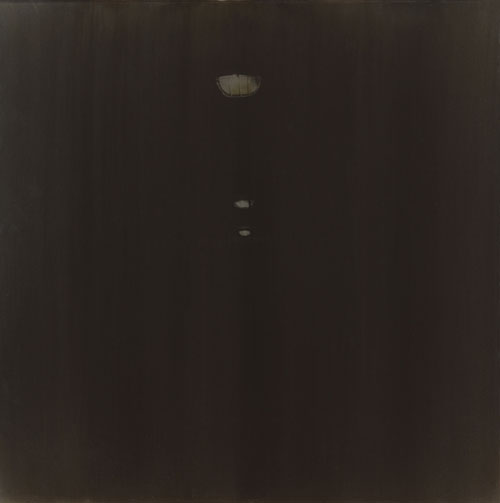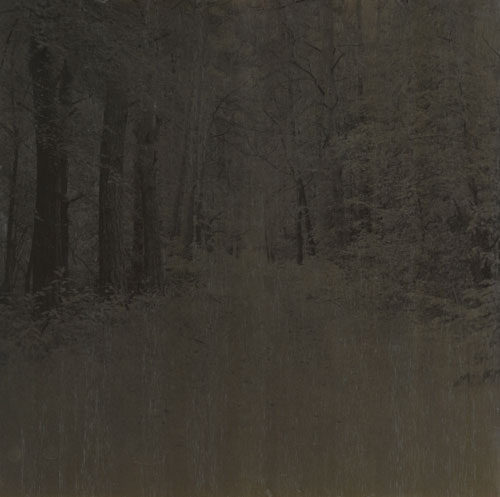
Gurs. Drancy. Bobigny station. Auschwitz. Birkenau. Chelmo-Kulmhof. Majdaneck. Sobibor. Treblinka. | Stéphane Garin & Sylvestre Gobart
Installation – Photography / Phonography
Recent pictures and sound recordings realised on the grounds of confinement, deportation and extermination of the Second War, in France and in Poland. Our artistic move aims to break off with the iconography which conditions our colective memory as much by the medium as by the contents of the pictures and the sound. What matters here is to attempt to recover and to reinvest that memory. The distance that separates us from the past tragedies increases the risk of a ritualization or a "monumentalization" of the memory, and that is the reason why we need, through art, to feed the visual memory of extermination. The delibarate choice not to work on any visual element that refers to the systematic iconography of the camps endeavours to create, with the sound, that restraint which is essential to reverence as it is the signature of what happened. There was, on the spot, no direction of the events. The sound recordings include no mixing.
Auschwitz. Birkenau. Chelmo-Kulmhof. Majdaneck. Sobibor.
Treblinka.
The extermination perpetrated by Nazi Germany and its collaborationist countries against those "undesirable" populations (Jews, homosexuals, tsiganes, communists, mentally and physically handicapped people…) provoked a real cataclysm within our civilization because of its method, its singularity and its extent.
What memory do we keep alive today of those events, at the time of multiple commemorations, memorials and other enclosed memories.
We have made the choice of concentrating on the places of memory and have undertaken to draw up a sound and photo portrait of several sites of confinement, deportation and extermination starting from Gurs (Pyrénées Atlantiques) towards Poland.
What matters here is to attempt to recover and to reinvest that memory. The distance that separates us from the past tragedies increases the risk of a ritualization or a "monumentalization" of the memory, and that is the reason why we need, through art, to feed the visual memory of extermination.
Today, above all, they’re archives pictures which shape our representations of historical events.
They eventually become some sorts of symbols of absolute evil, and merge into a huge repertory of horror left for us to watch, in which it’s easy to draw to indefinitely illustrate the camps.
So, the visual strategy adopted for the representation of the camps is most often a spectacular product, as the pictures are too often turned into icons of timeless infamy and separated from their historical context. About that trivialization of pictures, Jorge Semprun speaks about "mute pictures"
Through this project, we propose a different approach of these places of memory. Our choice is dictated by a will of abstraction, and by the intention of positively breaking off with the iconography which conditions our memory, as much by the medium as by the contents of the pictures and the sound.
The introduction of sound aims to try and slip towards abstraction. It makes mental pictures appear and, through that, the pictures taken on the places of memory combined with the sound attempt to escape from simple description.
So the aim is to invite the spectators to get rid of the pictures which are part of our large visual repertory (collective memory), it is a kind of intimate relationship with the work which allows them to gradually get to a new experience, beyond the simple setting of emotions.
For instance in Sobibor (in the district of Wlodowa), the second extermination camp opened in the framework of "Action Reinhard", we worked on the forest which now covers part of the site. Symbol of that destruction without ruins, without traces (the camp was demolished by the Nazis during Autumn 1943), the forest of Sobibor, without its legend, looks quite ordinary. Insignificant. Nevertheless, without any spectacular attraction, that wood, that land are the present memory of the extermination. Our artistic move aims here to carry the consciousness of that memory, and then maybe, make visible what can’t be seen any more. Think Sobibor as present.
A very different example now. A non-place of memory.
Through the impetus of Heinrich Himmler, the extermination camp of Majdaneck
(Konzentrationslager Lublin) was set up in October 1941, two kilometres south east of Lublin on an area of 2.7 square kilometres. Facing the fast advance of the Byelorussian front (the camp was freed on July 23rd 1944), the SS, in complete rout, did not have enough time to erase all the proofs of the massive executions that they had perpetrated there for almost three years.
That camp, unlike Sobibor, is still composed of its miradors and other wooden barracks, its enclosure of barbwires….and its crematorium, that can be visited freely.
On that site (Majdaneck), we have particularly chosen to centre our work on an area situated about sixty metres from the main entrance of the camp which was used as common graves. Yet that place, where several private buildings as well as a street have been built since then, is only vaguely located, no archaeological excavations have been carried out until today.
The whole of those post-war buildings raises the complex question of the relationship our society keeps up with its memory.
Here, we want to recall, not only what can’t be seen any more, but also that there is nothing to see, breaking with the usual glance of a certain collective memory, eager for spectacular.
The relationship between sound and picture is the centre of our move.
Through ordinary elements (the engine of a car, the barking of a dog…), the sound is here the object which allows to gradually slip towards some sort of abstraction. A distance which is necessary to allow to enter the thought more deeply
Then, insofar as reflection becomes expressible, each one may reach their own representation of the field of events, which has been short-circuited by the outside pictures of the official memory.
A corn field, a birch, a lane.
The photography of elements which are familiar to us tends to underline on one hand their banality and on the other hand their deeply moving singularity, the symbolic load which is associated with the name of the place
A corn field in Gurs, a birch in Birkenau, a lane in Drancy.
The deliberate choice not to work on any visual element that refers to the systematic iconography of the camps endeavours to create, like the sound, that restraint which is essential to reverence, as it is the signature of what happened.
Here are some of the sites we worked on:
Phonography
? Drancy. La cité de la Muette. January 27th 2007
? Auschwitz. Krematorium I. February 20th 2006
? Chelmo-Kulmhof. Jewish pilgrimage. August 10th 2006
Photography
Photographs are printed with a light sensitive emulsion on a sheet of zinc.
|
? Gurs. Confinement camp. February 25th 2007 |
? Drancy. La cité de la Muette. January 27th 2007 |
|
? Bobigny. Deportation station. May 27th 2006 |
? Auschwitz-Birkenau. Judenrampe. February 20th 2006 |
|
? Majdaneck. Showers for men. Gas chamber. August 15th 2006 |
? Birkenau. Krématorium V. February 22nd 2006 |
|
? Arm factory. Krupp AG. February 22nd 2006 |
? Auschwitz. Block 11. February 20th 2006 |
|
? Majdaneck. The graves. August 15th 2006 |
? Auschwitz. Krematorium I. February 20th 2006 |
|
? Sobibor. The quay. August 17th 2006 |
? Treblinka. The forest. August 12th 2006 |
|
? Sobibor. The village. August 16th 2006 |
? Chelmo-Kulmhof. Jewish pilgrimage. August 10th 2006 |
Projection – Video / Phonography
This piece can also be presented as a video-projection. The original pictures printed in sheet of zinc are filmed and edited. The final length is 48 minutes. (Requires a video projector / A large screen / A sound system with 2 speakers of high quality)
Gurs. Drancy. Bobigny station. Auschwitz. Birkenau. Chelmo-Kulmhof. Majdaneck. Sobibor. Treblinka. has been showed as a video projection at:
30 days of photography in Guatemala / Foto – 30
24th september – 8th october
Monday-friday / 8:30AM-1PM / 2PM-5h30PM
Saturday / 9AM-1PM
Sol Del Río Arte Contemporánea
14 av. 15-56 zona 10
Guatemala City
and:
– Festival In-ouir, les instants Chavirés Montreuil, France, 2007
– Baten-Bila , Hasparen, France, 2007
– Festival Ertz, Bera, France, 2008
© Stéphane Garin & Sylvestre Gobart
Bruxelles / Belgique / tel: (00) 32 25 38 07 04
Gruenrekorder / Germany / 2009 / LC 09488






















